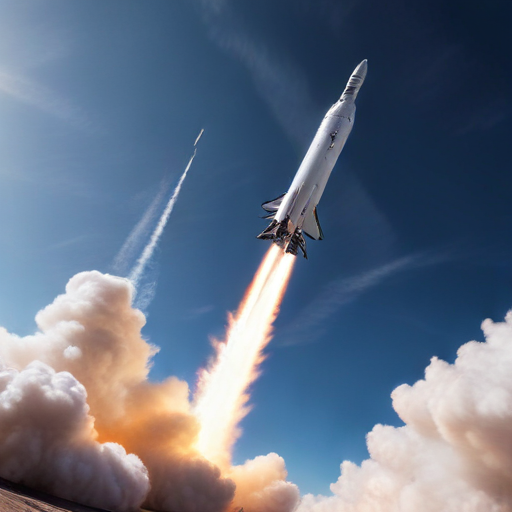SpaceX successfully launched its Starship vehicle on a test flight on November 19, marking the sixth attempt for this ambitious spacecraft. The launch commenced at 5 p.m. Eastern from the company’s Starbase test site in Boca Chica, Texas, coinciding with a 30-minute launch window that proceeded without issues during the countdown. Among the notable attendees was President-elect Donald Trump, who has recently cultivated a connection with SpaceX CEO Elon Musk.
The spacecraft, consisting of the Super Heavy booster—designated as Booster 13—and the Starship upper stage, experienced a smooth liftoff. Approximately two minutes and 45 seconds into the flight, the Super Heavy booster successfully separated from the Starship. However, shortly after its initial return trajectory was established, SpaceX announced that the booster would divert and not land back at the launch site, ultimately splashing down in the Gulf of Mexico. Unfortunately, the booster tipped over and exploded upon landing, representing a small setback for SpaceX, particularly after the previous successful booster recovery in October.
Despite the setback with the booster, the Starship upper stage, referred to as Ship 31, was still able to achieve a suborbital trajectory. During this phase, SpaceX conducted a test by reigniting one of the vehicle’s Raptor engines, a critical capability needed for future missions involving deorbit burns. Following reentry over the Indian Ocean, the company noted that this flight tested the vehicle’s limits, intentionally pushing its design to better understand its capabilities.
Starship endured reentry without catastrophic failure, although some damage to a flap and components of the thermal protection system was observed. It successfully executed a powered soft landing in the ocean 65 and a half minutes post-liftoff, tipping onto its side and floating on the water’s surface. This departure from the original launch schedule allowed the splashdown to occur during daylight, enhancing video coverage of the event.
In the wake of this test, SpaceX is planning upgrades for the next incarnation of the Starship upper stage. Changes will include an expansion of the vehicle’s design to accommodate larger propellant tanks and an increase in payload capacity from 1,200 to 1,500 tons. Additionally, forward flaps are being resized and reconfigured to enhance heat protection during reentry.
Notably, this test flight was conducted just a month after the previous mission, as modifications to the launch license from the Federal Aviation Administration (FAA) were not necessary. The FAA had approved Flight 6 under the existing license issued for Flight 5, deeming the limited operational changes acceptable.
Overall, while the booster experienced challenges, the test flight revealed valuable data and insights that SpaceX can leverage in pursuing its goal of achieving reliable and reusable space travel with the Starship vehicle. As the company continues to refine its technologies, there remains a sense of optimism for the future, with each flight bringing it closer to its goals of robust human and cargo missions to destinations beyond Earth.
